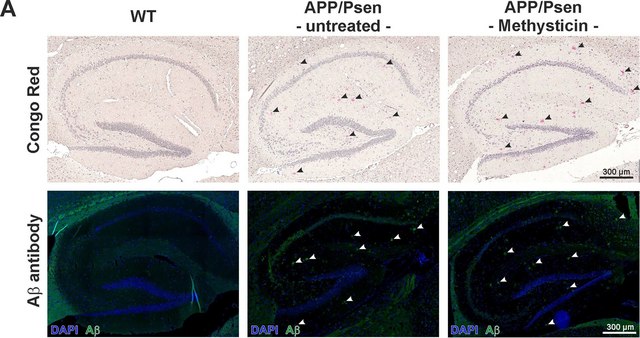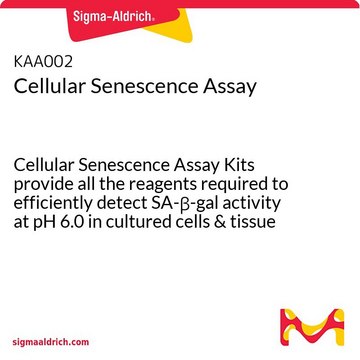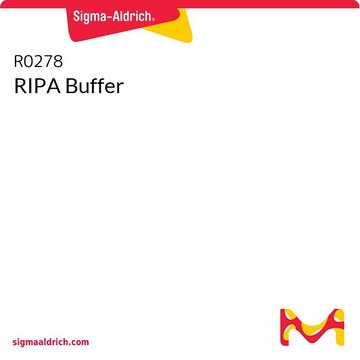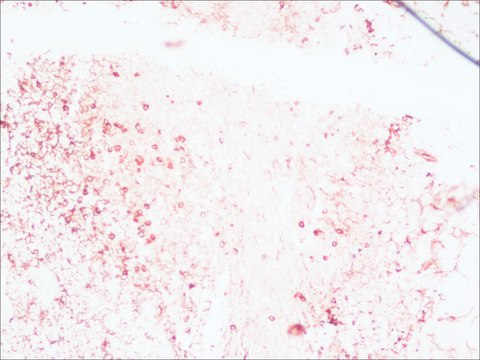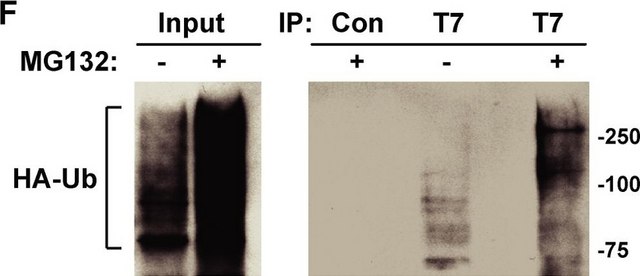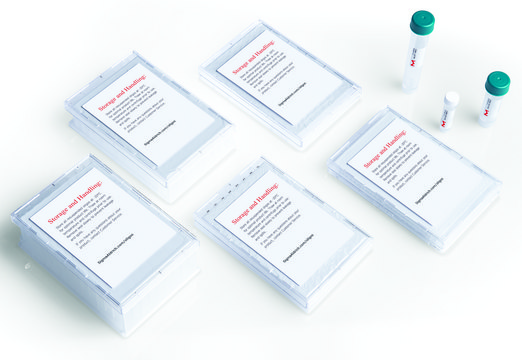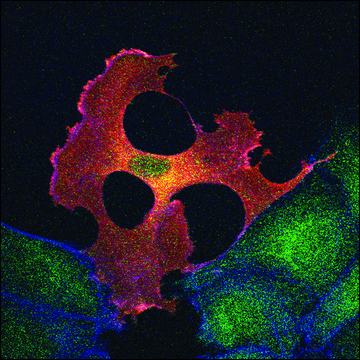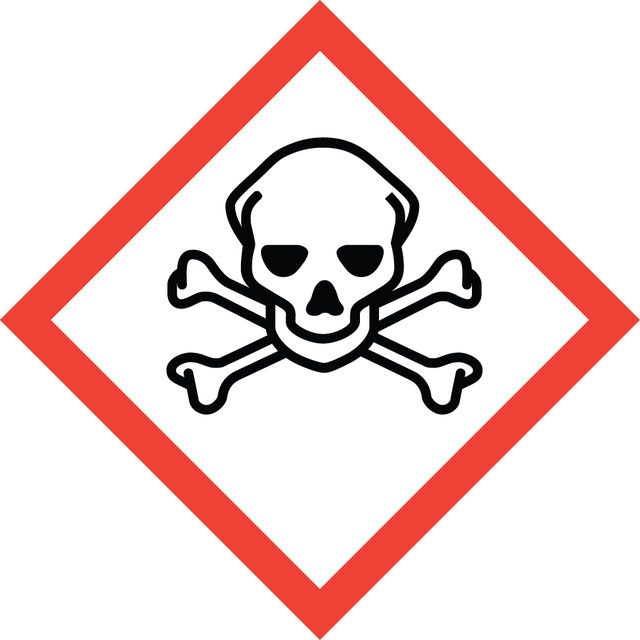推荐产品
产品名称
Anti-Amyloid βA4, clone 1E8 (Amino Terminus) Antibody, clone 1E8, 1 mg/mL, from mouse
生物来源
mouse
质量水平
抗体形式
affinity purified immunoglobulin
抗体产品类型
primary antibodies
克隆
1E8, monoclonal
纯化方式
affinity chromatography
种属反应性
human
浓度
1 mg/mL
技术
immunohistochemistry: suitable
immunoprecipitation (IP): suitable
western blot: suitable
同位素/亚型
IgG1κ
UniProt登记号
运输
wet ice
靶向翻译后修饰
unmodified
基因信息
human ... APP(351)
一般描述
Amyloid beta A4 protein, also known as ABPP or APPI (APP) or Alzheimer disease amyloid protein or Cerebral vascular amyloid peptide (CVAP) or PreA4 or Protease nexin-II (PN-II), and encoded by the gene name APP or A4 or AD1, belongs to the APP family. The beta-amyloid peptide (beta A4), proteolytically released from the amyloid precursor protein (APP), is the principal component of senile plaques in Alzheimer′s disease. Cleavage of APP by alpha-secretase or alternatively by beta-secretase leads to generation and extracellular release of soluble APP peptides, S-APP-alpha and S-APP-beta, respectively, and the retention of corresponding membrane-anchored C-terminal fragments, C83 and C99. Subsequent processing of C83 by gamma-secretase yields P3 peptides. This is the major secretory pathway and is nonamyloidogenic. Alternatively, presenilin/nicastrin-mediated gamma-secretase processing of C99 releases the amyloid beta proteins, amyloid-beta 40 (Abeta40) and amyloid-beta 42 (Abeta42), major components of amyloid plaques, and the cytotoxic C-terminal fragments, gamma-CTF(50), gamma-CTF(57) and gamma-CTF(59). Mab βA4N-1E8 recognizes the free N-terminus of the bA4 polypeptide with high preference and crossreacts with sAPPα.
特异性
This antibody is specific for the first 2 amino acids of the Amyloid beta peptide amino terminus.
免疫原
Epitope: N-terminus
KLH-conjugated peptide corresponding to the N-terminus of human Amyloid βA4.
应用
Immunohistochemistry Analysis: A 1:500-2,000 dilution from a representative lot was used to detect Amyloid βA4 in human Alzheimer′s brain and thalamus tissues.
Western Blotting Analysis: A representative lot was used to detect Amyloid βA4 in Western Blotting. (Wiltfang, et al. 2001; Serneels, et al. 2009; Maler, et al. 2007).
Immunoprecipitation Analysis: A representative lot was used to detect Amyloid βA4 in Immunoprecipitation. (Wiltfang, et al. 2001; Maler, et al. 2007).
Western Blotting Analysis: A representative lot was used to detect Amyloid βA4 in Western Blotting. (Wiltfang, et al. 2001; Serneels, et al. 2009; Maler, et al. 2007).
Immunoprecipitation Analysis: A representative lot was used to detect Amyloid βA4 in Immunoprecipitation. (Wiltfang, et al. 2001; Maler, et al. 2007).
Research Category
Neuroscience
Neuroscience
Research Sub Category
Neurodegenerative Diseases
Neurodegenerative Diseases
This Anti-Amyloid βA4, clone 1E8 (Amino Terminus) Antibody is validated for use in western blotting, IHC & IP for the detection of Amyloid βA4.
质量
Evaluated by Western Blotting in human Alzheimer′s brain tissue lysate.
Western Blotting Analysis: A 1:1,000 dilution of this antibody detected Amyloid βA4 in human Alzheimer′s brain tissue lysate.
Western Blotting Analysis: A 1:1,000 dilution of this antibody detected Amyloid βA4 in human Alzheimer′s brain tissue lysate.
目标描述
~4 kDa observed. Uncharacterized bands may be observed in some lysate(s).
外形
Affinity
Purified mouse monoclonal IgG1κ in buffer containing PBS, PEG, Sucrose, and up to 0.1% sodium azide.
储存及稳定性
For long-term storage, freeze lyophilizate upon arrival (2-8°C). Upon reconstitution, aliquote and freeze in liquid nitrogen; reconstituted antibody can be stored frozen at -80°C up to 1 year. Thaw aliquots at 37°C. Thawed aliquots may be stored at 4°C up to 3 months.
Avoid repeated freeze / thaw cycles.
Avoid repeated freeze / thaw cycles.
免责声明
Unless otherwise stated in our catalog or other company documentation accompanying the product(s), our products are intended for research use only and are not to be used for any other purpose, which includes but is not limited to, unauthorized commercial uses, in vitro diagnostic uses, ex vivo or in vivo therapeutic uses or any type of consumption or application to humans or animals.
未找到合适的产品?
试试我们的产品选型工具.
警示用语:
Danger
危险分类
Acute Tox. 3 Dermal - Acute Tox. 4 Inhalation - Acute Tox. 4 Oral - Aquatic Chronic 3
储存分类代码
6.1C - Combustible acute toxic Cat.3 / toxic compounds or compounds which causing chronic effects
WGK
WGK 1
Lauren H Fairley et al.
Proceedings of the National Academy of Sciences of the United States of America, 120(8), e2209177120-e2209177120 (2023-02-15)
Microglial phagocytosis is an energetically demanding process that plays a critical role in the removal of toxic protein aggregates in Alzheimer's disease (AD). Recent evidence indicates that a switch in energy production from mitochondrial respiration to glycolysis disrupts this important
Daniela Giraldo-Berrio et al.
Neurotoxicity research, 42(3), 28-28 (2024-06-06)
Parkinson's disease with dementia (PDD) is a neurological disorder that clinically and neuropathologically overlaps with Parkinson's disease (PD) and Alzheimer's disease (AD). Although it is assumed that alpha-synuclein ( α -Syn), amyloid beta (A β ), and the protein Tau
Nicolas Gomez-Sequeda et al.
International journal of molecular sciences, 25(9) (2024-05-11)
Familial Alzheimer's disease (FAD) is a complex and multifactorial neurodegenerative disorder for which no curative therapies are yet available. Indeed, no single medication or intervention has proven fully effective thus far. Therefore, the combination of multitarget agents has been appealing
我们的科学家团队拥有各种研究领域经验,包括生命科学、材料科学、化学合成、色谱、分析及许多其他领域.
联系技术服务部门